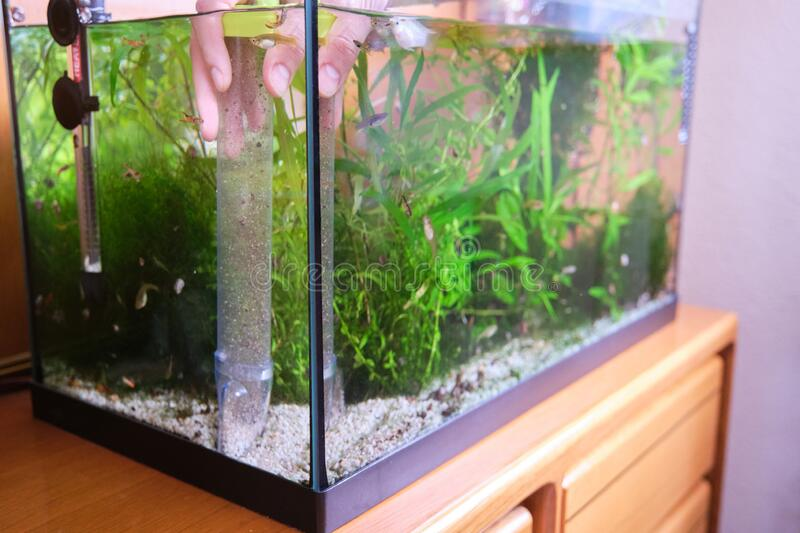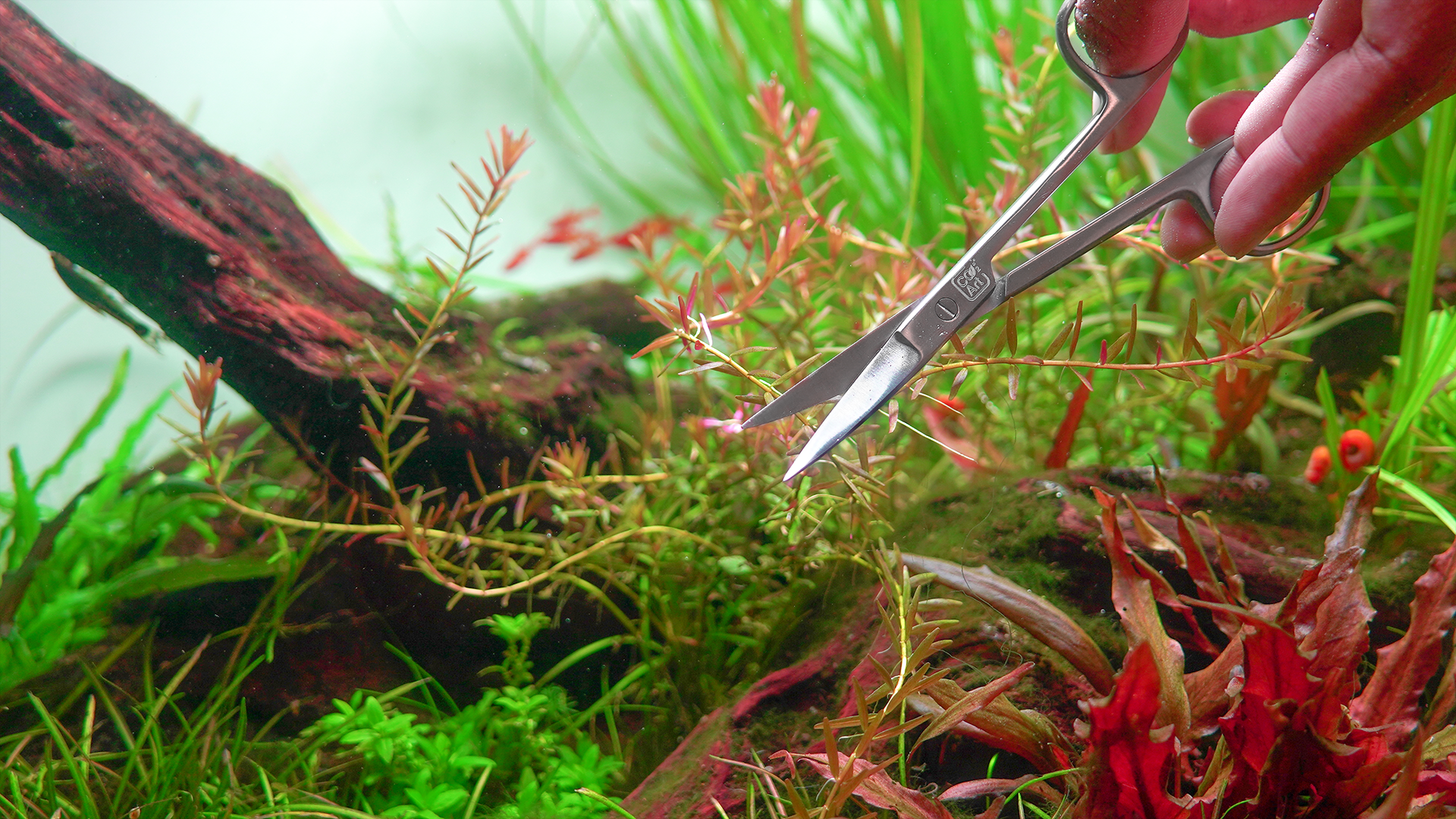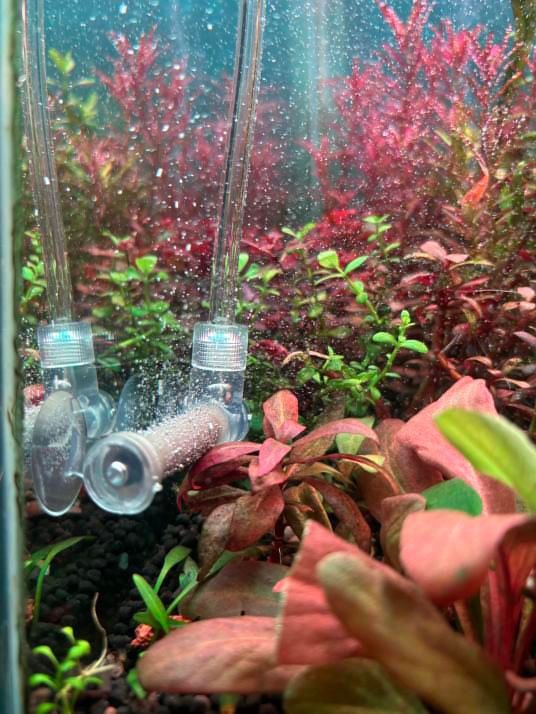Routine aquarium maintenance
Introduction: Why Routine Maintenance Matters
Taking good care of an aquarium is more than just feeding your fish—it's a continuous process that ensures the stability of the ecosystem. Proper aquarium care prevents harmful spikes in ammonia, nitrate, and other imbalances that can stress or kill aquatic life. It also helps maintain the beauty and clarity of your tank over time.
Beginners may feel overwhelmed at first, but once maintenance becomes a habit, it's a simple and rewarding routine. Understanding the key tasks and their frequency is crucial for building a sustainable environment for your fish and plants. Even a few minutes a day can make a long-term difference.
Remember, a clean, stable environment results in healthier fish and thriving plants. Neglecting regular care, on the other hand, can quickly lead to cloudy water, disease, and algae overgrowth. Prevention is always easier than solving a crisis after it occurs.

Daily Checks: Observing Your Aquarium’s Health
One of the simplest yet most powerful maintenance steps is observing your tank daily. This means checking the water clarity, the condition of your plants, and watching for any odd behavior from your fish. These quick check-ins can alert you early to bigger problems.
You should also take note of feeding behavior and whether any food is left uneaten. Keeping a light hand with feeding reduces waste buildup and keeps the tank cleaner for longer. In many cases, a consistent observation routine helps you learn your tank’s natural rhythm.
While these checks are brief, they're invaluable. They’re the first defense against illness, equipment failure, or chemical imbalance. Daily attention is a cornerstone of effective aquarium maintenance, and it only takes a few minutes.
Water Testing: Keeping Parameters in Balance
Knowing how often to clean aquarium water depends on multiple factors—such as bioload, plant density, and filter efficiency—but regular testing is always essential. It lets you monitor ammonia, nitrites, nitrates, and pH levels, all of which impact your fish's health.
Test strips offer convenience, while liquid test kits offer more accuracy. Both are useful tools in your aquarium maintenance schedule, especially when testing weekly or bi-weekly. Having a log of your water parameters also helps identify long-term trends.
Stable water chemistry supports your biological filtration and prevents algae blooms. It's also key to ensuring any new fish or plants introduced to the tank don’t experience shock. Testing keeps your aquarium system predictable and manageable.

Water Changes: Frequency, Volume, and Technique
If you're wondering how to take care of an aquarium, water changes are one of the most important tasks. Removing 15–30% of the water weekly keeps nitrate levels under control and replaces trace minerals lost over time.
Use a gravel vacuum during water changes to remove debris from the freshwater aquarium maintenance substrate, especially in planted or heavily stocked tanks. Avoid changing too much at once, as this can disrupt beneficial bacteria and stress your fish.
Establishing a consistent tank maintenance routine that includes proper water changes greatly reduces the risk of disease and algae. It also keeps your tank looking pristine and your aquatic life thriving in a balanced, healthy environment.
Filter Maintenance: Cleaning Without Disrupting Bacteria
Proper filter maintenance is essential to ensure your aquarium operates efficiently. Regular cleaning of the filter helps maintain optimal water flow, removes debris, and supports the filtration process. However, it’s crucial to clean the filter media without disrupting the beneficial bacteria that help break down ammonia and other harmful substances. To do this, rinse the filter media in water taken from your aquarium during a water change rather than using tap water, which can harm the good bacteria.
While cleaning the filter, it’s also essential to inspect the filter system to ensure it’s functioning correctly. If the filter media is worn or clogged, replace it with new media to maintain proper filtration. Remember that filter maintenance should be done regularly, but not too frequently, to allow the bacteria to stabilise in the system. If you clean the filter too often, you risk reducing the number of beneficial bacteria, leading to potential water quality issues.
Regular filter maintenance helps prevent common problems such as ammonia spikes and water quality deterioration. This ensures that your aquarium stays healthy and that your fish are not exposed to harmful toxins. By maintaining your filter properly, you also support the entire aquarium’s ecosystem, from the biological filtration to overall water clarity.
Gravel and Substrate Cleaning and Managing Organic Waste
Gravel and substrate cleaning is a crucial part of your routine aquarium maintenance. Over time, fish waste, uneaten food, and decaying plant matter accumulate in the substrate, contributing to excess nutrients that can affect water quality and promote algae growth. Using a gravel vacuum during water changes helps remove organic waste without disturbing the natural balance of your aquarium. The vacuum siphons debris from the substrate, ensuring that the aquarium water stays clean and healthy.
Cleaning the substrate not only removes debris but also prevents the build-up of harmful substances like ammonia and nitrate. These toxins can cause harm to your fish and destabilize the environment. By regularly cleaning the substrate, you help maintain proper biological filtration, which is essential for a healthy tank. Removing organic waste is also vital for controlling nitrate levels and preventing potential spikes in ammonia.
In addition to cleaning the substrate, consider using a substrate material that supports beneficial bacteria and promotes the growth of plants. Proper maintenance of the substrate helps ensure a healthy ecosystem in your aquarium, making it an ideal environment for both fish and plants. By removing organic waste and maintaining a clean substrate, you reduce the risk of harmful toxins and ensure your aquarium remains balanced and vibrant.

Glass and Decorations: Controlling Algae and Aesthetics
Maintaining the glass of your aquarium is essential for keeping it clear and aesthetically pleasing. Algae growth on the glass can obstruct the view and reduce the visual appeal of your tank. Regularly cleaning the glass with an algae scraper or sponge helps keep it looking pristine. For more stubborn algae, you can use an aquarium-safe cleaner, but always ensure you’re not harming your aquarium’s ecosystem in the process. Cleaning the glass also prevents the growth of algae that can affect water quality by consuming oxygen and releasing harmful substances.
The decorations in your aquarium also require maintenance to ensure they don’t contribute to algae growth or detract from the overall aesthetic. Aquarium decorations, such as rocks, driftwood, and ornaments, can trap debris and organic waste that could fuel algae blooms. Regularly inspecting and cleaning these items helps maintain a balanced and healthy environment. Additionally, some decorations can be placed in strategic areas to reduce the amount of light reaching certain parts of the tank, helping to control algae growth.
Regularly cleaning the glass and decorations also helps reduce the accumulation of harmful organic materials like fish waste and uneaten food, which can contribute to water imbalances. By prioritising the cleanliness and aesthetics of your aquarium, you create a better environment for your fish and plants while preventing issues like algae overgrowth that can negatively impact water quality.
Plant Care: Trimming, Replanting, and Debris Removal
Proper plant care is vital for a thriving aquarium and helps maintain the balance of the ecosystem. Regular trimming of plants prevents overgrowth and ensures they don't outcompete each other for light and nutrients. Removing dead or decaying plant matter is also crucial for keeping the tank clean and preventing the buildup of organic waste that could affect water quality. Well-maintained plants also contribute to water quality by absorbing excess nutrients, thus reducing the potential for algae growth.
Replanting is another important aspect of plant care. As plants grow and spread, you may need to replant certain species to give them the space they need to thrive. When replanting, be mindful of the roots and avoid disturbing the surrounding substrate too much, as this can release trapped debris and disturb the balance of beneficial bacteria. By regularly adjusting and replanting your plants, you promote healthier growth and ensure that they continue to support the biological filtration of your aquarium.
Finally, debris removal is an essential part of plant care. Dead plant matter, uneaten food, and organic waste can accumulate around plant roots and under leaves, which could lead to an increase in ammonia and nitrate levels. Regularly removing debris from around plants and keeping the substrate clean helps maintain a healthier environment and improves the overall appearance of the tank. By ensuring your plants are well cared for, you contribute to a balanced aquarium that supports the health of both your plants and fish.

CO2 Injection and Equipment Maintenance
Maintaining a consistent CO2 injection system is essential for the health of both your plants and fish. CO2 is a crucial component for photosynthesis, particularly in planted aquariums. If your CO2 system isn’t properly maintained, it can lead to poor plant growth and increased algae growth due to nutrient imbalances. Regularly check the CO2 equipment, including the regulator, tubing, and diffuser, to ensure it’s functioning correctly. Clean the diffuser to remove any buildup, which can reduce the flow of CO2 into the tank, affecting the plants' ability to thrive.
In addition to the CO2 system, maintaining the equipment used to regulate the environment in your aquarium is key to the overall health of the system. Filters, heaters, and lighting all require regular maintenance to ensure that your tank operates efficiently. For example, regularly cleaning filter media and inspecting the heater for proper function prevents issues with water temperature and filtration. Keeping these systems in top condition also helps to maintain water quality, which directly impacts the health of your fish and plants. By paying attention to the proper upkeep of CO2 equipment and other essential systems, you ensure a balanced and thriving aquarium.
It's also important to remember that the maintenance of CO2 equipment directly influences the overall stability of the aquarium. When CO2 levels fluctuate, it can cause changes in pH, which might stress both your plants and fish. To avoid this, it’s critical to regularly monitor CO2 levels with a drop checker or pH monitor to ensure optimal conditions for plant growth and fish health.

Feeding Routines and Leftover Food Maintenance
Establishing a proper feeding routine is vital to ensure the health of your fish and the cleanliness of your tank. Overfeeding can result in leftover food that decays and contributes to poor water quality, leading to high levels of ammonia and nitrates. Feeding your fish the appropriate amount of food—typically only what they can consume in a few minutes—helps reduce the amount of waste in the tank. Additionally, it’s essential to feed your fish on a regular schedule to avoid excess buildup of uneaten food and organic matter.
To maintain good aquarium health, it’s also important to remove any leftover food from the tank after each feeding session. Uneaten food that’s left to decay can cause an increase in ammonia and nitrate levels, which can harm your fishand plants. A small siphon or vacuum is an effective tool for removing leftover food and waste from the substrate. By keeping your tank clean and ensuring that you’re not overfeeding, you help maintain a balanced environment that promotes healthy fish and vibrant plants.
In addition to reducing waste, controlling the feeding routine helps prevent excessive algae growth, which can result from high nutrient levels. Overfeeding contributes to high phosphates and nitrates, both of which fuel algae. By maintaining proper feeding habits and removing excess food, you’re helping to keep your aquarium clean, supporting your fish and plants, and preventing the buildup of nutrients that can lead to unwanted algae blooms.
Seasonal and Monthly Checkups
Seasonal and monthly checkups are essential to ensure the long-term health of your aquarium. During these checkups, you should perform a thorough inspection of all equipment, including filters, heaters, and lighting, as well as check the water quality. Look for any signs of wear and tear on equipment and replace parts as necessary. For example, check the filter media to ensure it’s not clogged and that it's still functioning properly. If you notice any issues with water quality, such as fluctuations in ammonia or nitrate levels, perform a water change and address the source of the problem. These regular checks can prevent more significant issues from arising and ensure that your aquarium remains in top condition.
Another key part of your monthly checkup should include reviewing the health of your fish and plants. Look for any signs of disease or stress, such as unusual swimming patterns or faded colors in fish, or yellowing and wilting in plants. If you spot any problems, you can address them early before they develop into larger issues. Additionally, checking the substrate for excess debris and organic waste buildup is a good practice. This will help prevent ammonia spikes and maintain a stable environment for all the inhabitants of your aquarium. Performing these seasonal and monthly checkups helps to ensure the overall health and balance of your tank.
These seasonal checkups should also be an opportunity to assess the growth of your aquarium plants and their nutrient needs. As plants grow, they can outcompete algae for nutrients, improving water quality. However, they may also require trimming, and some might need additional supplementation with fertilizers or CO2. By regularly checking on the health of your plants and making adjustments as needed, you help keep your aquarium environment thriving and avoid imbalances that can lead to algae blooms or poor water quality.
Conclusion: Creating a Habit for Long-Term Success
Routine aquarium maintenance is essential for the long-term success of your tank. Establishing good habits, such as regular water changes, filter maintenance, and monitoring water quality, will help you avoid common issues like poor fish health, imbalanced water chemistry, and excess algae growth. By developing a maintenance routine that works for you, you ensure that your aquarium remains a healthy and vibrant environment for both your fish and plants. Regular attention to your aquarium will also allow you to identify problems early and correct them before they become major issues.
Creating a consistent maintenance schedule and sticking to it will not only keep your aquarium clean and healthy but also foster a deeper connection with your fish and plants. By monitoring your tank and being proactive about equipment upkeep and water quality, you’ll be able to enjoy a thriving ecosystem for years to come. Over time, routine care will become second nature, and you’ll be able to spot potential problems before they affect your fish and plants. Ultimately, aquarium care is about consistency, attention to detail, and a commitment to long-term success in maintaining a balanced aquatic environment.
Meet our bestseller! The Pro-Elite Series Complete Aquarium CO2 System with New Inline CO2 Diffuser!




